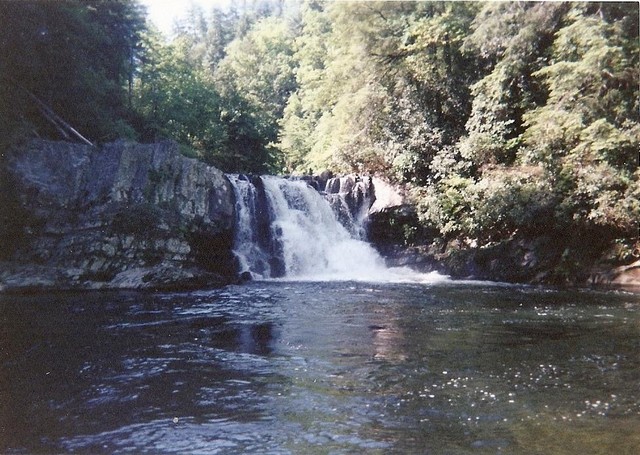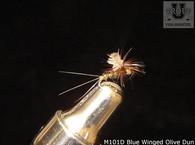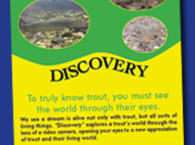
Abrams Creek was named after the Cherokee Chief of the town of Chilhowee named Abraham. It flows underground through limestone depressions for almost three miles before it emerges at Cades Cove. The pH of Cades Cove is 7.8 to 8.4 which makes it far more fertile than most of the other streams in the park which are more acidic. Abrams Creek flows approximately 12 miles from Cades Cove to the Chilhowee Lake. Along the way there are 18 smaller streams that empty into iAdams Creek, the biggest of which is Anthony Creek.
The easiest portion of Abrams Creek to access is in the upper portion of the stream with acess from the Abrams Falls Trail parking lot. As you continue down the trail, prior to reaching Abram Creek Falls, you will come to two major curves iin the stream: Little Horseshoe and Big Horseshoe. This area is mountainous and very difficult to travel. It is suggested that when you fish this section of the Adams Creek, that you plan to spend the entire day as you may not have an opportunity to get back to the trail before darkness sets in. Climbing the ridge to exit the stream is certainly not recommended.
The lower portion is more suited for small mouth bass than it is for rainbow trout. However, it can be accessed from the Abrams Creek Campground. For more information about access to Abrams Creek, please refer to the directions further down this page.
The rainbow trout in Abrams Creek are among the largest in the Great Smoky Mountains National Park (GSMNP) due to the alkaline water. However, due to the akalinity the stream is extremely slippery and caution should be exercised. On my first trip to Abrams Creek I evenually became so frustrated that I crawled to the bank! I recommend that you have a good pair of wading boots with good felt soles.
Seasons:
As with other streams in the GSMNP, the fishing is good all year.
Spring:
Spring is a very productive time to fish Abrams Creek with Quil Gordons and Large Green Drakes hatching.
Summer:
Due to the underground portion of Adams Creek, the water temperature is cooler than most of the other streams in the GSMNP. Abrams remains excellent through the summer with Blue Winged Olives and Little Yellow Stonefly hatches occuring.
Fall:
Fall fishing is great with Blue Winged Olives and Brown Sculpins. Fall is also an especially scenic time to visit Cades Cove with the bonus of deer and bear sightings not uncommon.
Winter:
Again, due to the underground flow of that portion of Abrams Creek, the water temperature is moderated much the same as tailwaters, so the fishing remains good. Around the middle or end of February, Blue Winged Olives start to hatch followed in March by the Blue Quill mayflies and the Little Black Caddis.
NOTE: If you have any suggestions to improve or to add to this information please use the Contact Form to do so.
From Townsend take TN 321 to the GSMNP entrance, turn right on Little River Road to Cades Cove. From Gatlinburg, turn right at the Sugarlands Visitor Center onto Little River Road and on to Cades Cove, Once on the Cades cove Road you will travel nearly halfway around the 11-mile loop road to the Abram Falls Trail parking. There you can hike the Abrams Falls Trail.
Recommended DVDs:
Fly Fish Fishing the Great Smoky Mountains Park
Fly fishing Strategies That Catch Trout
Shop Our TroutU Store for the "Perfect Fly" line of flies.
Also see Trout University for free classes, Fly fishing Instructional DVDs and much more.
Recommended Reading: The best book about the GSMNP. Fly Fishing in the Great Smoky Mountains National Park: An Insider’s Guide to a Pursuit of Passion. by Jim Casada.
View Great Smoky Mountains National Park Fly Fishing Guide in a larger map





